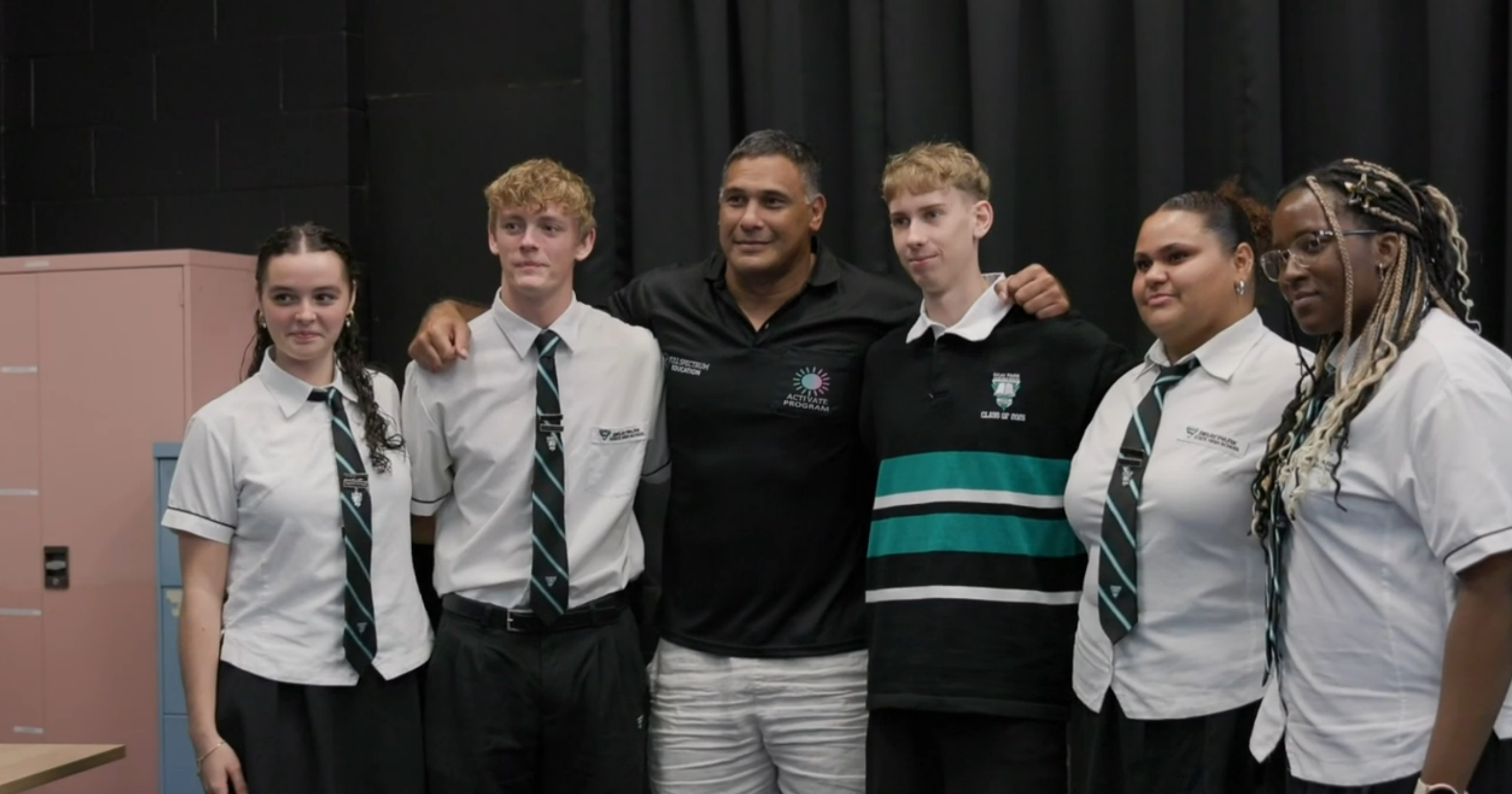


In order to develop learners who can think in complex and creative ways, and who are knowledgeable with deep understanding of the world in which they live, it is necessary to expose students to learning opportunities which explore problematic issues of knowledge in a challenging manner. Adolescents need learning challenges in an environment characterised by high expectations and constructive, honest feedback (Barratt, 1998: 30). This involves learners in evaluating the nature of the evidence they use and in the investigation of questions to which the answer is not clear cut or predetermined. The level of complexity of the research task should be within the range Vygotsky defines as the "zone of proximal development" - the optimum range for effective learning to take place. The ZPD is the range of potential each person has for learning. (Wertsch, 1991)
The “ZPD” is a ‘challenge’ area situated just beyond what the student knows or can do now but not so far beyond as to be impossible to reach. Using the analogy of a high jumper, the ZPD would involve raising the bar high enough above the jumper’s current ‘personal best’ to present a meaningful goal and challenge, but not so far that it becomes a seeming impossibility and the jumper gives up. Central to such a philosophy of learning is the belief that academic self-esteem rises from successfully meeting a challenge. (Gross, 2000). This concept would seem to be supported by Renate Caine’s investigations into ‘brain-based learning’ (1994). Caine argues that Learning is enhanced by challenge but inhibited by threat. Where students feel disempowered and a sense of helplessness (threat) they ‘downshift’ and underachieve or drop out.
Inquiry based investigations can address this need for appropriate challenge by providing differentiated questions for research,
differentiated methodologies for investigation, and differentiated products which present research findings. Research conducted by the
Centre for Performance Assessment suggests schools which demonstrated high levels of student success in a wide range of assessment contexts
had a “laser-like focus on student achievement”, had clear standards of excellence and “no compromises on these expectations for quality”.
The challenge for teachers in the middle years is to ensure a consistent focus on intellectual quality and rigor is maintained.
BY SUE BURVILL-SHAW
REFERENCES
Aditomo, A, Goodyear, P, Bliuc, AM & Ellis, R (2013), ‘Inquiry-based learning in higher education: Principal forms, educational objectives, and disciplinary variations’, Studies in Higher Education, vol. 38, no. 9, pp. 1239–1258, http://dx.doi.org/10.1080/03075079.2011.616584
Abbott-Chapman, Joan & Hughes, Phillip, (October 1991) “What Makes a good Teacher?” Paper Presented to the 21st ATEA
National Conference,
Melbourne.
Australian Curriculum Studies Association (2003) “Middle Schooling Principals”
http://www.acsa.edu.au/projects/middle/index.hm accessed February 24 2005)
Australian Secondary Principals’ Association (1994?) “Middle School Policy” http://www.aspa.asn.au/polmdsch.htm#top
accessed November 22, 2003
Barrat, R (1998) Shaping Middle Schooling in Australia: Report of the National Middle Schooling Project ACSA: Canberra
Beane, J (October 1991) “The Middle School: The Natural Home of Integrated Curriculum” Educational Leadership 49 (2)
Braggett, Eddie (1997) The Middle Years of Schooling Kawker Brownlow: Cheltenham, Vict
Bigelow, B, Harvey, B, Karp, S & Millar L (2002) Rethinking our Classrooms: Teaching for Equity and Justice Rethinking Schools:
Milwaukee, WI
Catholic Education Office (2004) “Pathways for Middle Schooling: Walking the Talk” http://www.bne.catholic.edu.au/pub/reandcurriculum/middle_schooling/middleschoolingpositionpaper.pdf
accessed April 5th, 2005
Caine, R., and G. Caine. (1994). Making Connections: Teaching and the Human Brain. Menlo Park, Calif.: Addison-Wesley.
Carnegie Corporation of New York (??) “Great Transitions: Preparing Adolescents for a New Century” http://www.carnegie.org/sub/pubs/reports/great_transitions/gr_chpt4.html
accessed April 2 2005)
Cassie, Fiona (2004) “On Task or Off the Planet?” Education Review April 14-20
Cerezo, Nancy (2004) “Problem-Based Learning In The Middle School: A Research Case Study Of The Perceptions Of At-Risk Females” National
Middle Schools Association
at http://www.nmsa.org/ accessed April 5 2005)
Cumming, J (ed) (1998) Extending Reform in the Middle Years of Schooling ACSC: Canberra
Education Queensland (2000) “Queensland State Education 2010” http://education.qld.gov.au/corporate/qse2010/
Queensland Government: Brisbane accessed March 11, 2005
Education Queensland (2004) Middle Phases of Learning State School Action Plan
Erikson, H L (1995) Stirring the Head, Heart and Soul: Redefining Curriculum and Instruction Corwin Press: Thousand Oaks, CA
Gordon, K (1999) Inquiry Approaches in Primary Studies of SOSE KLA http://www.qsa.qld.edu.au/yrs1to10/kla/sose/docs/rp_pri00.doc Queensland
School Curriculum Council: Brisbane accessed June 22, 2005
Hardingham, R (2000) “Reform in the Middle Year” Middle Schooling: An Information Paper prepared for Education Queensland
Queensland University of Technology: Brisbane
Hargreaves, A (1994) Changing Teachers, Changing Times: Teachers’ Work and Culture in the Postmodern Age Cassell: London
Hoepper, B and Land, R (1996) ‘Planning investigations” in R. Gilbert (Ed.), Studying Society and Environment: A Handbook for Teachers.
Macmillan: Melbourne,
Holden, Steve (2004) “Making Schools Better” Professional Educator 3 (4) October
Kamener, Larry (2005) “Creating and Sustaining a performance and Development Culture” EQ Australia Curriculum Corporation: Carlton,
Victoria.
Kemmis, S, Cole, P and Suggett, D (1983) Orientations to Curriculum and Transition to the Socially Critical School, Victorian
Institute of Secondary Education: Melbourne.
McIntyre, Donal (1991) “The Oxford University Model of Teacher Education” South Pacific Journal of Teacher Education 19 (2)
Masters, G. (2016), ‘Five challenges in Australian school education’, Policy Insights, ( 5), Australian Council for Educational
Research (ACER), research.acer.edu.au/policyinsights/5.
Murdoch, K & Hornsby, D (1997) Planning Curriculum Connections: Whole-School Planning for Integrated Curriculum Elanor Curtin:
Armadale, Victoria
MCEETYA [Melbourne Council on Education, Employment, Training and Youth Affairs] (2008), Melbourne declaration on educational goals for
young Australians,
MCEETYA, Carlton South, Vic.
Nayler, J (1999) Inquiry Approaches to Secondary SOSE KLA http://www.qsa.qld.edu.au/yrs1to10/kla/sose/docs/rp_sec00.doc
Queensland School Curriculum Council: Brisbane accessed June 22, 2005
Pinar, William F (Summer, 1992) “Dreamt into existence by others: Curriculum Theory and Reform” Theory into Practice 31 (3)
Queensland Curriculum and Assessment Authority (QCAA), (2015) Year 7 -10 History Australian Curriculum in Queensland, Queensland
Curriculum and Assessment Authority: Brisbane
Queensland Curriculum and Assessment Authority (QCAA), (2019) Senior Ancient History Syllabus, Queensland Curriculum and Assessment
Authority: Brisbane.
Queensland Curriculum and Assessment Authority (QCAA), (2019) Senior modern History Syllabus, Queensland Curriculum and Assessment Authority: Brisbane
Reis, Sally et al, (1992) Curriculum Compacting Hawker Brownlow: Melbourne
Romanish, Bruce (1991) Empowering Teachers: Restructuring Schools for the Twentieth Century University Press of America: Lantham
Ross, E Wayne, Cornett, Jeffery W & McCutcheon, Gail (1992) Teacher Personal Theorising: Connecting Curriculum Practice, Theory and
Research
SUNY: New York
Seaton, Andrew (2001) “New Wine Demands New Bottles” EQ Australia Spring
Smith, Robert (1993) “Potentials for Empowerment in critical Education Research” Australian Educational Researcher 20 (2)
Smyth, John (Summer 1992) “Teachers’ Work and the Politics of Reflection” American Educational Research Journal 29 (2)
Stenhouse, Lawrence (1975) An Introduction to Curriculum Research and Development Heinemann: London
Tomlinson, Carol Ann (1999) The Differentiated Classroom: Responding to the Needs of All Learners ASCD: Virginia
Tomlinson, Carol Ann (1992) “Gifted Education and the Middle School Movement: Two voices on teaching the Academically Talented” Journal for the Education of the Gifted 15 (3) pp 206-238
Van Tassel-Basks, Joyce (1992) “Developing Learner Outcomes for Gifted Students” ERIC Digest #E514 Council for Exceptional Children:
Reston, Va.
Vygotsky, L.S. (1978). Mind in Society. Cambridge, MA: Harvard University Press.
Waring, Felicity & Pat Kiddey (2001) Success For All Curriculum Corporation: Carlton
Wertsch, J. V. (1991) Voices of the mind: A Sociocultural Approach to Mediated Action. Cambridge, MA: Harvard University
Press.
“What Makes Teens Tick?” (2004) Time May 10